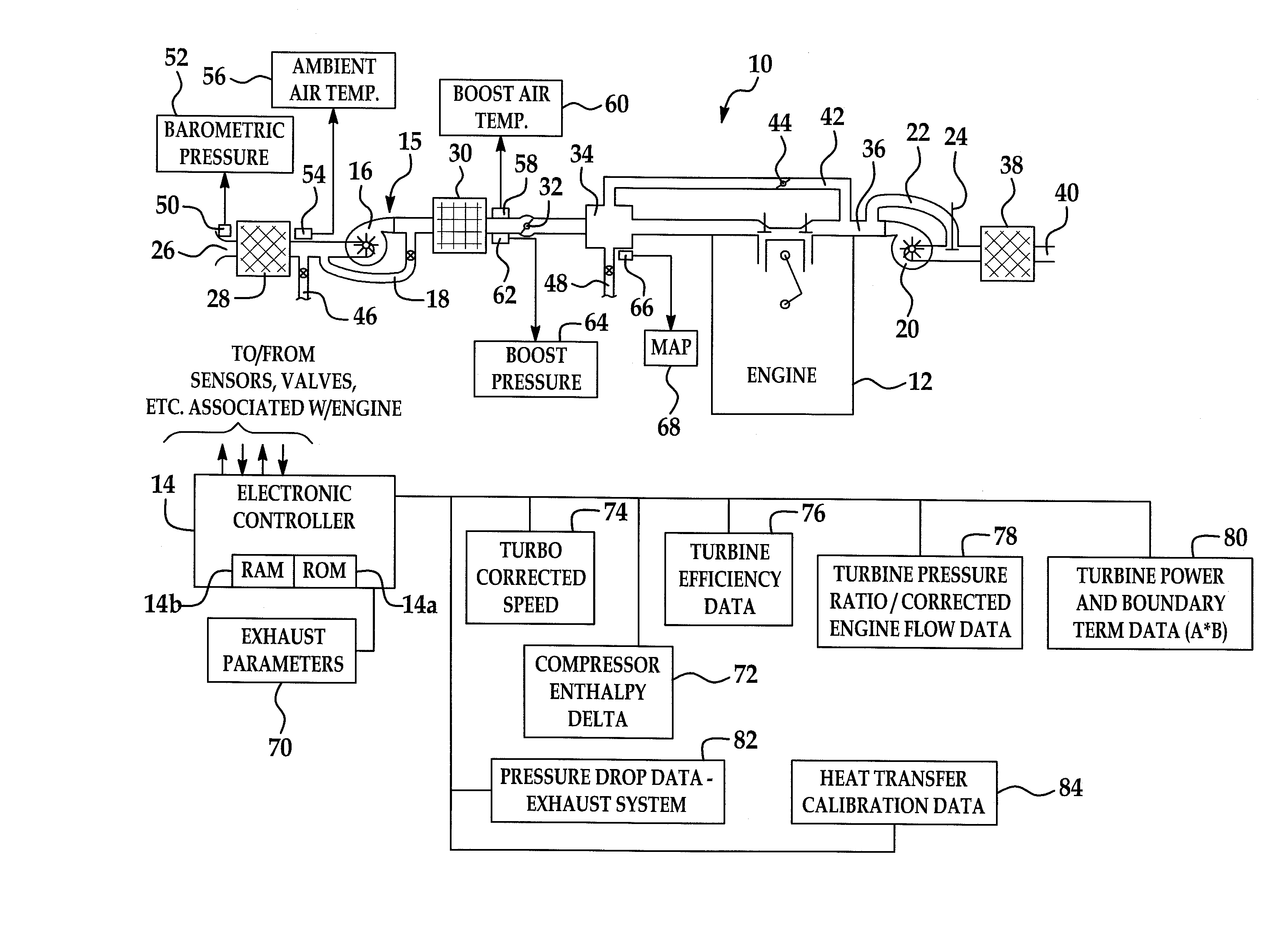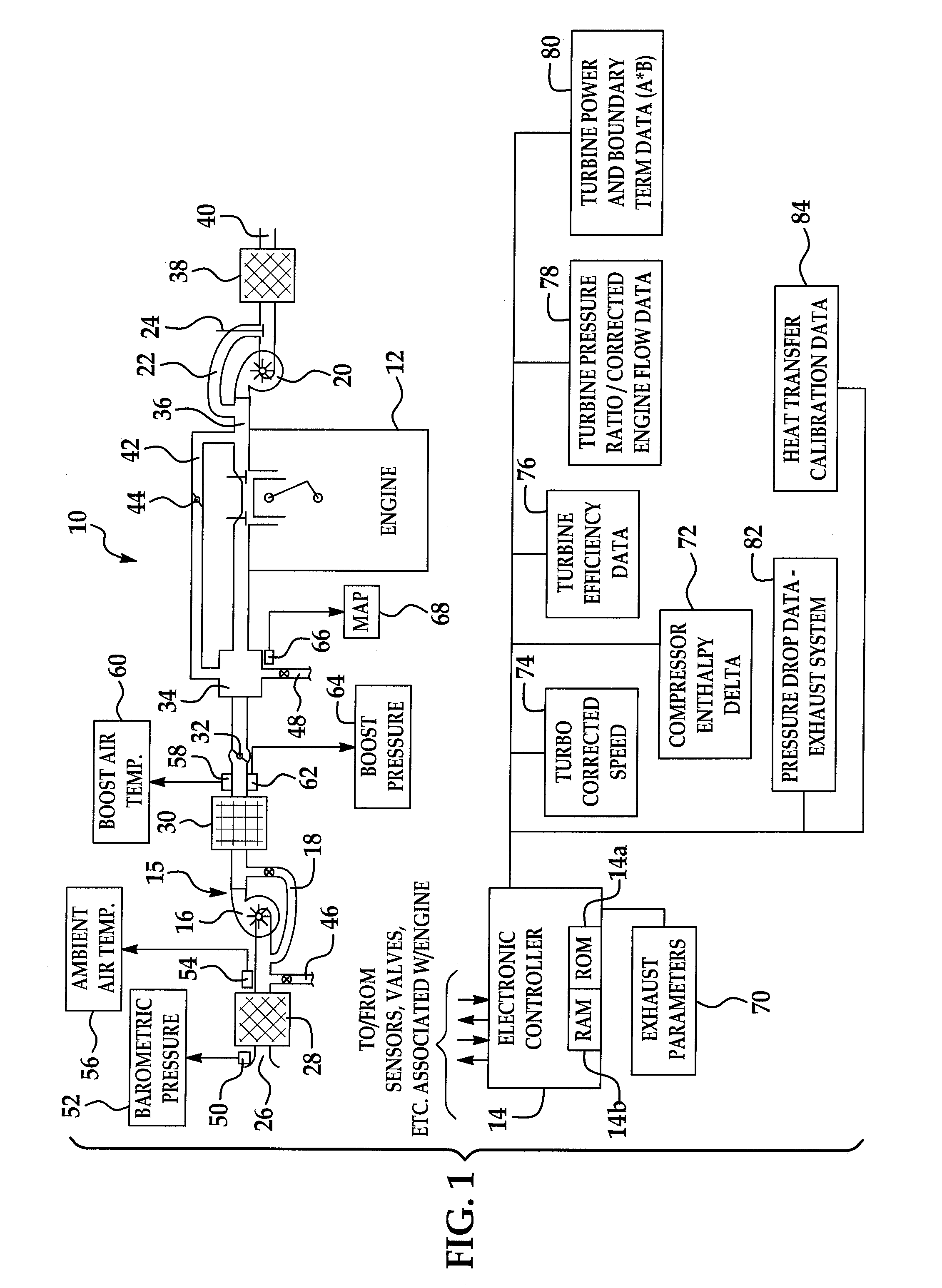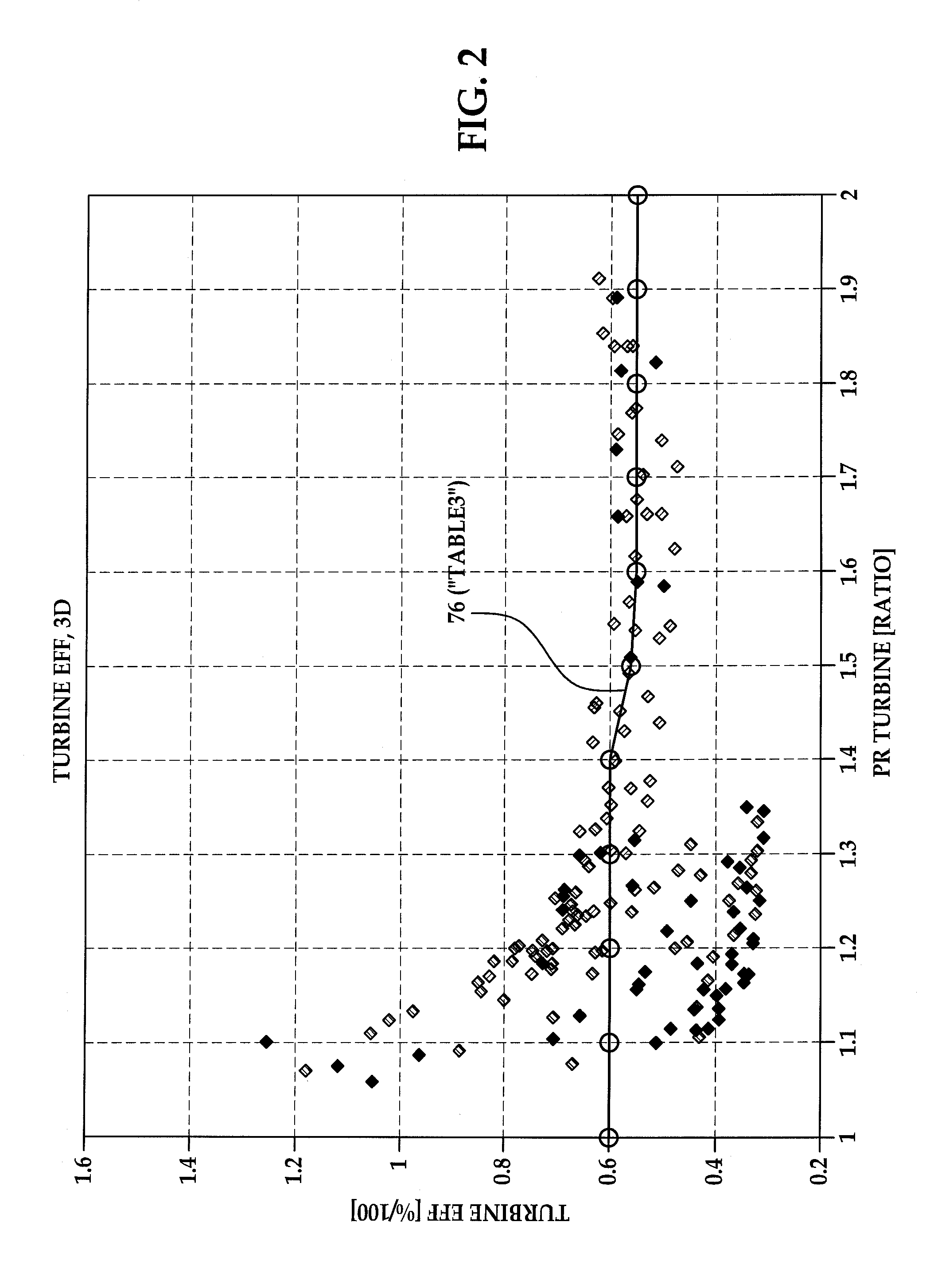System and method for modeling of turbo-charged engines and indirect measurement of turbine and waste-gate flow and turbine efficiency
a technology of turbine and wastegate, which is applied in the direction of machines/engines, electric control, instruments, etc., can solve the problems of the inability to know the amount of exhaust gas flowing through the turbine, and the inability to accurately predict the flow of exhaust gas through the turbine, etc., to achieve the effect of convenient implementation
- Summary
- Abstract
- Description
- Claims
- Application Information
AI Technical Summary
Benefits of technology
Problems solved by technology
Method used
Image
Examples
Embodiment Construction
[0017]Referring now to the drawings wherein like reference numerals are used to identify identical components in the various views, FIG. 1 is a diagrammatic view of a turbo-charged internal combustion engine system 10 configured in accordance with the present invention. The system 10 includes an internal combustion engine 12 controlled by an electronic engine controller 14 all in accordance with the present invention.
[0018]Engine 12 may be a spark-ignition engine that includes a number of base engine components, sensing devices, output systems and devices, and a control system. Alternatively, the present invention may be used with compression-ignition engines, such as diesel or the like.
[0019]Generally, electronic controller 14 is configured via suitable programming to contain various software algorithms and calibrations, electrically connected and responsive to a plurality of engine and vehicle sensors, and operably connected to a plurality of output devices. Controller 14 includes...
PUM
 Login to View More
Login to View More Abstract
Description
Claims
Application Information
 Login to View More
Login to View More - R&D
- Intellectual Property
- Life Sciences
- Materials
- Tech Scout
- Unparalleled Data Quality
- Higher Quality Content
- 60% Fewer Hallucinations
Browse by: Latest US Patents, China's latest patents, Technical Efficacy Thesaurus, Application Domain, Technology Topic, Popular Technical Reports.
© 2025 PatSnap. All rights reserved.Legal|Privacy policy|Modern Slavery Act Transparency Statement|Sitemap|About US| Contact US: help@patsnap.com



